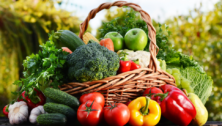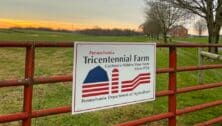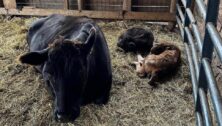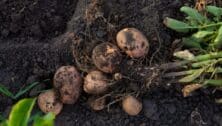Chester County Ag Notes: Farming Past and Future
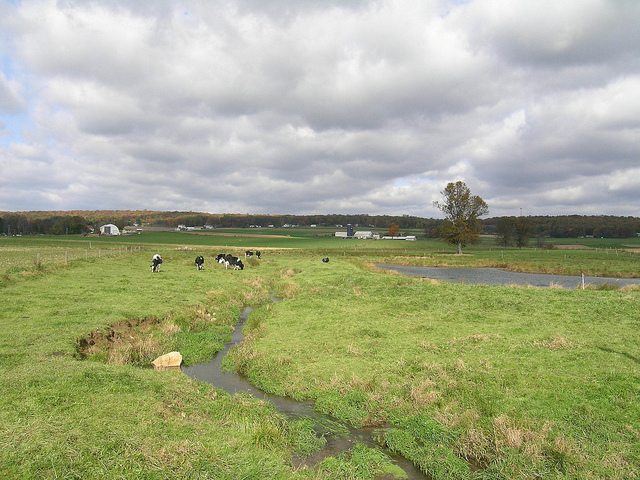
By Duncan Allison
Plant and livestock breeding can be considered the main reason why the human race has been able to increase from a few million to the current six billion people. Our early forbears were hunter gatherers who moved around to find the best areas for finding plant derived seeds, vegetation and fruits and for hunting animals and catching fish.
The first signs of settlement were found around 12,000 years ago in the Fertile Crescent (Near East) but similar developments occurred later in fertile regions on other continents. Seeds were collected from the plants with the most bountiful and nutritious seeds and planted in a cleared area so that harvesting would be facilitated. For example wheat and barley were domesticated in the Near East and rice in Western China around 9,000- 12,000 years ago. Corn originated from teosinte grass on our continent ten thousand years ago and has become a major global food, feed and energy (ethanol) source.
Sheep were the first animals to be herded around 11,000 years ago with the aim of saving time hunting for meat. The domestication of cattle, goats and pigs followed in much the same geographical area and pigs were the first target to provide meat in China.
We would not be able to recognize those early plants and animals that were selected to provide a more secure source of food rather than depend on hunting and gathering. Einkorn wheat was one of the first crops and aurochs were considered the wild ancestor of cattle.
Constant selection of the biggest seed and animals ensured that over time harvests were bigger and more reliable and animals bigger and more manageable. Farmers would save seed from the best plants and breed from the healthiest most productive livestock. However it has only been during the last century that the major advances in breeding and genetics have allowed major advances in productivity.
None of the major livestock breeds are indigenous to the US so were introduced from Europe. Wealthy farmers imported the latest breeds of cattle and sheep from Europe such as Friesians dairy cattle, Hereford beef cattle and Suffolk sheep. Over the years farmers selected their best livestock for breeding so that there was gradual improvement in increasing the production of milk, meat, milk and eggs.
Corn is the only one of our major crops which originated on this continent though there are several vegetables and fruits which are truly native.
Historically all farmers saved their own seed from the best performing plants. Plant breeding, production and distribution were largely carried out by universities and USDA but in 1924 Congress cut their programs. Seed companies really began to flourish when hybrid crops were developed in the 1930’s.
The science of genetics and breeding was initiated by Gregor Mendel in the 19th century and has exploded in the last 70-80 years. It is generally agreed that 50% or more of the average yield gain for each crop can be attributed to genetic improvements of plant varieties. For example corn yields have increased from 20 bushels per acre in 1930 to 70 bushels in 1970 and 168 bushels in 2015.
Livestock breeding by selection and cross breeding has also played a critical role in improving productivity with milk yields being a good example. In 1850 there had been little differentiation between cattle bred for milk production or beef so milk production was only 2,371 lbs. per cow per year. Since then specialist breeds have developed for milk production, such as the familiar black and white Friesians, so that the average yield in 2015 was 22,639 lbs. or 2,632 gallons per cow.
Today developments in biotechnology and genetics are facilitating even further advances not just in yields but better nutritional content, higher resistance to disease and insects and ability to deal with drought conditions. Basically we have no more good farmland in the US so we will need these further developments in breeding to feed the additional 2 or more billion people by 2050.
Connect With Your Community
Subscribe to stay informed!
"*" indicates required fields















![95000-1023_ACJ_BannerAd[1]](https://vista.today/wp-content/uploads/2023/03/95000-1023_ACJ_BannerAd1.jpg)





























